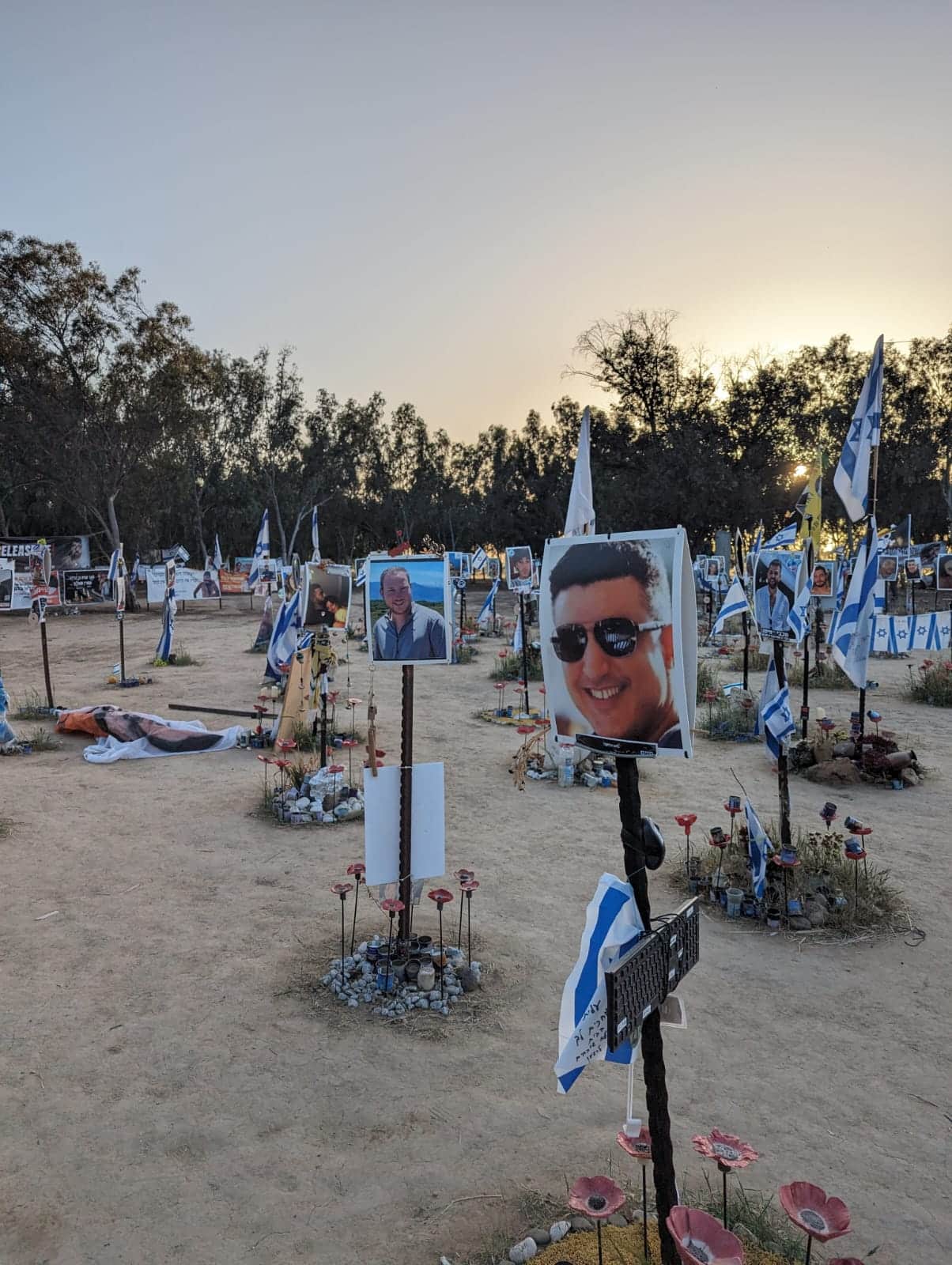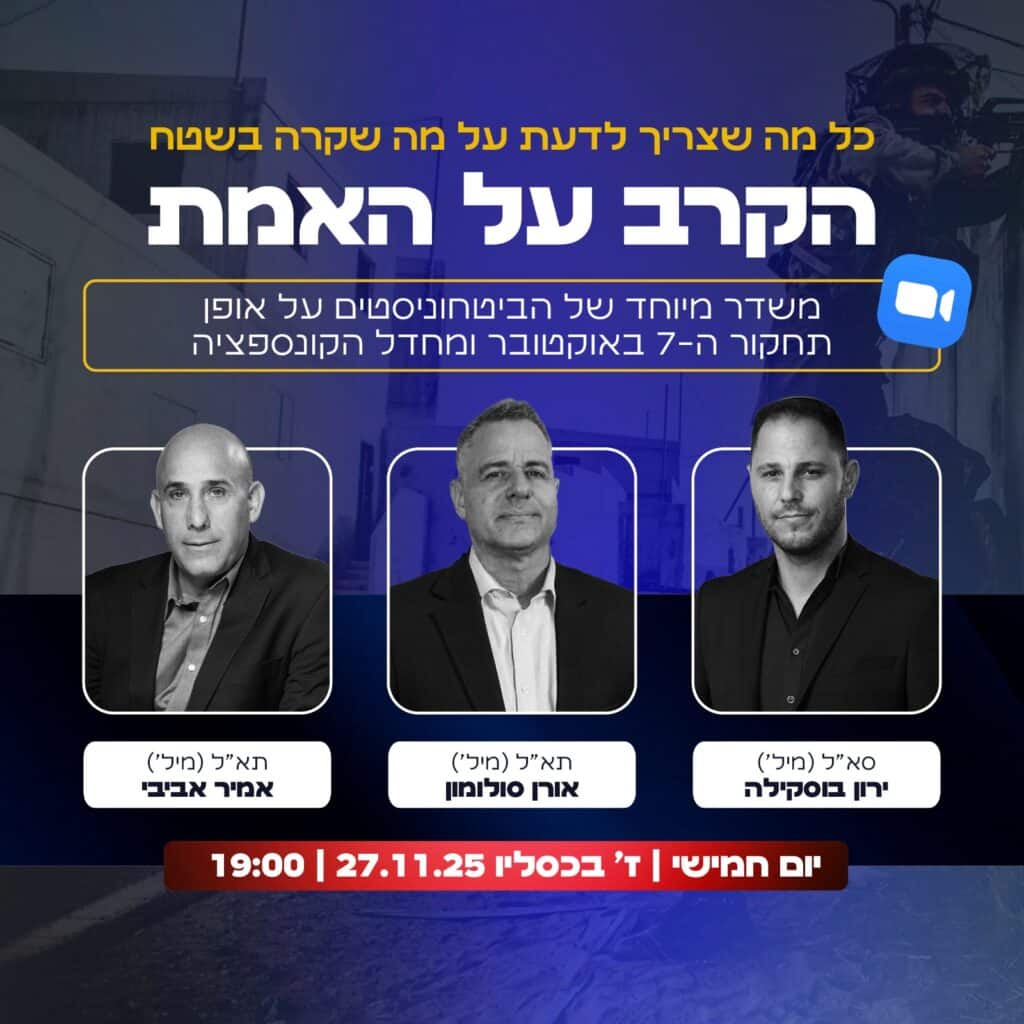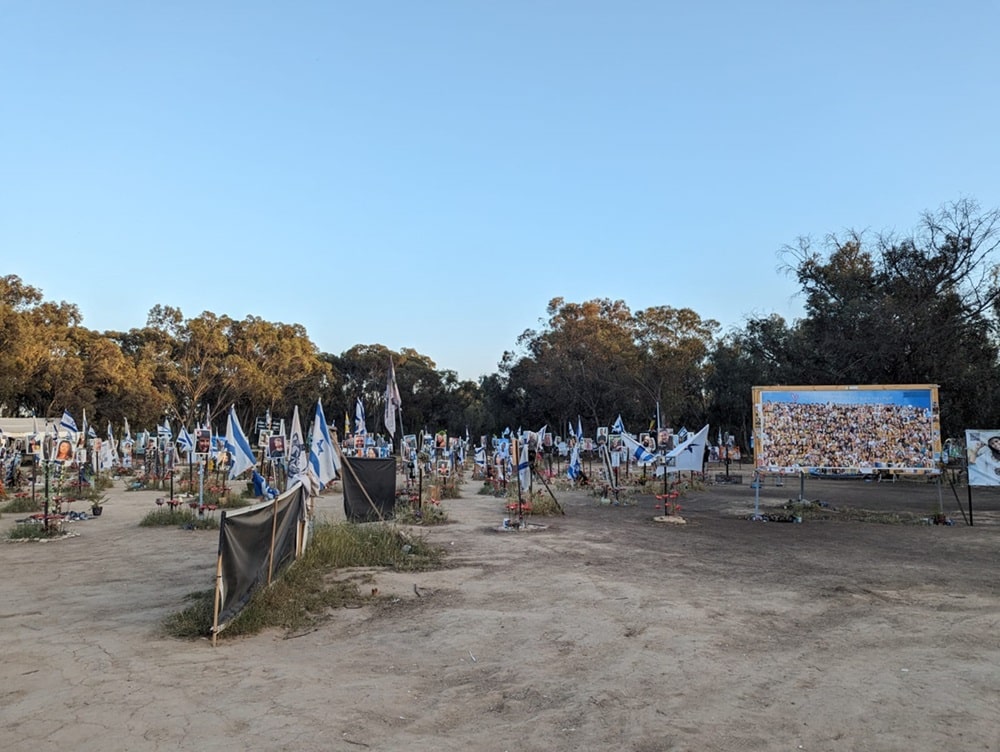
How is a heritage site born? It seems like this requires a combination of a strategic location, a unique story of heroism, and the time that passes until these are fixed in the national consciousness as stories worthy of commemoration. True, Israel has no shortage of battle lore sites. From the Bible, 1948 to the present day, the Land of Israel is replete with tales of heroism, but the events of October 7 seem to be in a class of their own. Such a vast collection of hair-raising, heart-wrenching heroism stories, that have made their way into the national psyche in such a short timespan – this is all something we have never known.
This time we are devoting our section to a battle lore tour of the Gaza Envelope, to come close to what happened that fateful Sabbath. We will visit the Black Arrow memorial, a long-time memorial site that on October 7 became a battleground in itself. From there we will continue to the Cars Memorial near Moshav Tekuma and to the commemorative installations at the site of the Nova festival.
Before we get going – two important points: first of all find out whether the sites are open to the public, since from time to time the IDF might declare them off-limits as closed military zones while the war in Gaza continues. Second, do not enter the Envelope settlements – it’s fascinating, it’s important, but the local residents themselves need peace and quiet. We are sure that proper memorials will be built in future, at which we will be able to pay our respects and commemorate, without encroaching on the local population’s privacy.
Tour mode: by car and on foot.
Tour duration: 1-2 hours.
Black Arrow Memorial: “If we had had such a unit in 1948, we would have taken Jerusalem”
The Black Arrow memorial is accessed near the Sha’ar HaNegev Junction, south of Sderot, via Road Highway 34 or Road 232. The memorial commemorates the battle lore of the paratrooper unit during the Reprisals Period against the Fedayeen infiltrators from Egypt between 1953-1956 before the Sinai Campaign. These reprisals shaped the IDF combat doctrine to this day, including its values: dedication to the mission, never abandoning casualties on the battlefield and camaraderie.
The memorial is named after Operation Black Arrow, which took place on the night of February 28, 1955 in the Gaza Strip, which at the time was under Egyptian rule. The background for this operation was a series of attacks carried out by the Fedayeen infiltrators, including the murder of an Israeli citizen in Rehovot, 45 km inland from the border. The goal was to enter the Strip, destroy an Egyptian army base near Gaza City and to blow up the water works and train station there. The mission was assigned to a paratrooper force commanded by Ariel Sharon. Taking part were commandos who would go on to become part of the main command backbone of the IDF. They included Mota Gur and David Elazar (Dado) who both went on to be Chiefs of General Staff, Shimon Kahaner (Katcha), Danny Matt, Uzi Eilam, Tibi Shapira, Levy Hofesh and Moshe Yanuka.
The mission experienced several mishaps. The commandos had to overcome several problems – the advance intelligence, identifying the base, the withdrawal and the medevac (shortage of stretchers, difficulties coordinating with ambulances after crossing the border) – and our casualty count was high: 8 dead and 13 injured. However, thanks to their boundless resiliency, their heroism and determination, the commandos succeeded in accomplishing their mission despite all the obstacles: the waterworks were destroyed, the base was occupied and damaged and the Egyptians lost 37 soldiers. Three of the commandos were awarded the Medal of Valor: Se’adia Elkayam, posthumously, who was killed in action, and Aharon Davidi and Uzi Eilam. Ben-Gurion praised the paratroopers after the operation: “If we had had such a unit in 1948, we would have completed the battle for Jerusalem and we would have taken Latroun.”
The sight is an observation point and lookout over Gaza City and the Gaza Strip, where most of the operations took place. At the entrance to the site plaza is a small statue of two figures, representing the camaraderie. Around the site are four audio stations that tell the story of the operations. There is also a map of the battles. The memorial presents 11 select operations out of the 70 that were carried out over those years. At the center of the site are plaques with the names of the fallen, with the following verse inscribed above them: “And stay ye not, but pursue after your enemies, and smite the hindmost of them” (Joshua 10, 19).
At the site inauguration ceremony in March 2003, Ariel Sharon quoted Moshe Dayan, who said in 1955:
“We cannot protect every water pipe against sabotage or every tree from being uprooted. We cannot prevent workers from being murdered in the orchard or families from being slaughtered as they sleep, but we can exact a heavy price for our blood, such a heavy price that it will cease to be worth the while of the Arab populace, the Arab army and the Arab governments to pay it.”
On October 7 this site once again became a battlefield. The Hamas Nukhba Forces, which consisted of some 20 vehicles and hundreds of terrorists, converged at the site and prepared for an organized assault on Kibbutz Kissufim and maybe also on Kibbutz Nir-Am. When the Yamam (National Counter-Terrorism Unit) and Shabak (Israel Security Agency) squads arrived on the scene, the terrorists spotted one of the vehicles and critically injured the four Shabak agents who were in it. The reinforcements that arrived included soldiers from Duvdevan and Maglan units, and the Air Force was also put to use by Shabak. The reinforcements managed, within a short space of time, to neutralize 40 terrorists, as can be seen in the video released on October 8 in which Major-General (Res.) David Zinni showed the results of their counterattack. Following fierce fighting, which lasted several hours, some 200 terrorists were killed and the rest fled back to Gaza. A document was found on the body of one of the terrorists, which contained the operation plan for the “Kibbutz Mefalsim Mission”.
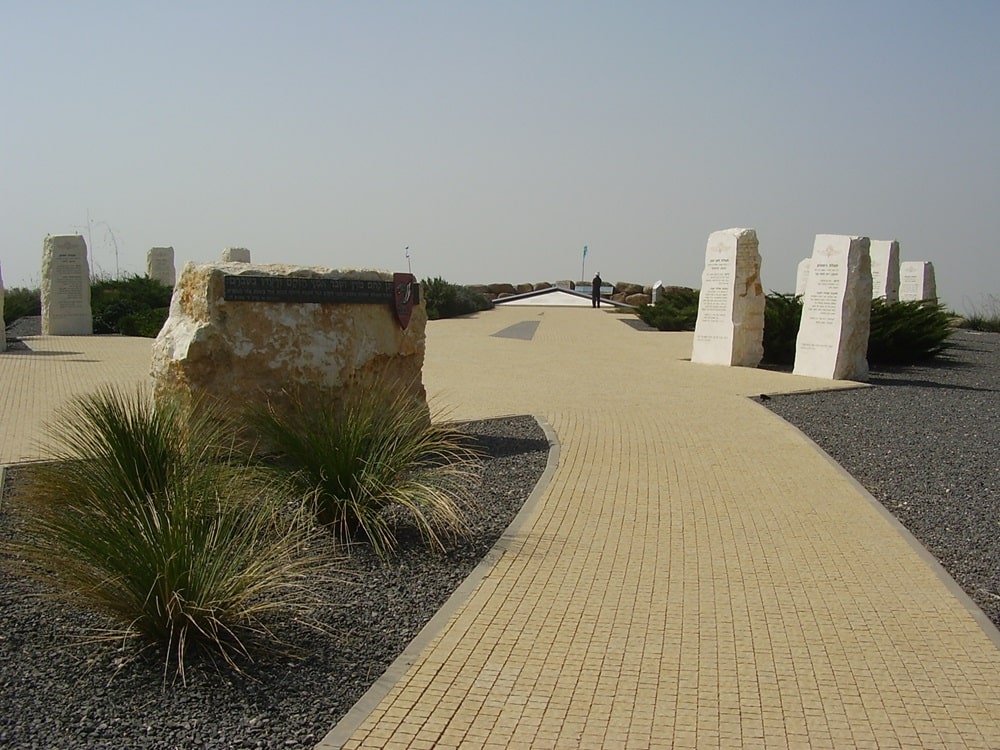
The Vehicles Memorial: The Inanimate Objects that Tell the October 7 Story
From the site we continue south and turn left at Sa’ad Junction onto Road 25, where we will come to the Vehicles Memorial near Moshav Tekuma. When one experiences a large-scale catastrophe, one cannot imagine or comprehend the numbers. The Vehicles Memorial, which at first sight seems like an enormous junk yard, manages to convey the scale of the disaster.
The memorial is actually a concentration of the vehicles that were destroyed on that Black Sabbath. They are stacked one on top of and beside the other. Burnt, riddled with bullet holes, squashed. Some bear a sticker – “Released – Inspected and Cleaned by the Zaka Volunteers”. These vehicles tell the October 7 story: some of them turned into death traps at the Nova Festival in Re’im, others were gutted on the roads themselves and some were squashed by tanks in their rush toward the settlements. Each vehicle has its own individual tale of heroism, each one is a whole world that was lost.
Among other things, there is an ambulance from the Nova site that had been set alight and was completely gutted. In one corner are the vehicles used by the terrorists: the white pickup trucks, a heap of motorcycles, and jeeps – some of which were modified to function as war machines.
The burnt vehicles are the responsibility of the Ministry of Heritage, which is planning to build a memorial site here to remind us who our enemies are, and what must be done to prevent such a horrific event from ever recurring, to make sure we guarantee Israel’s security for future generations.
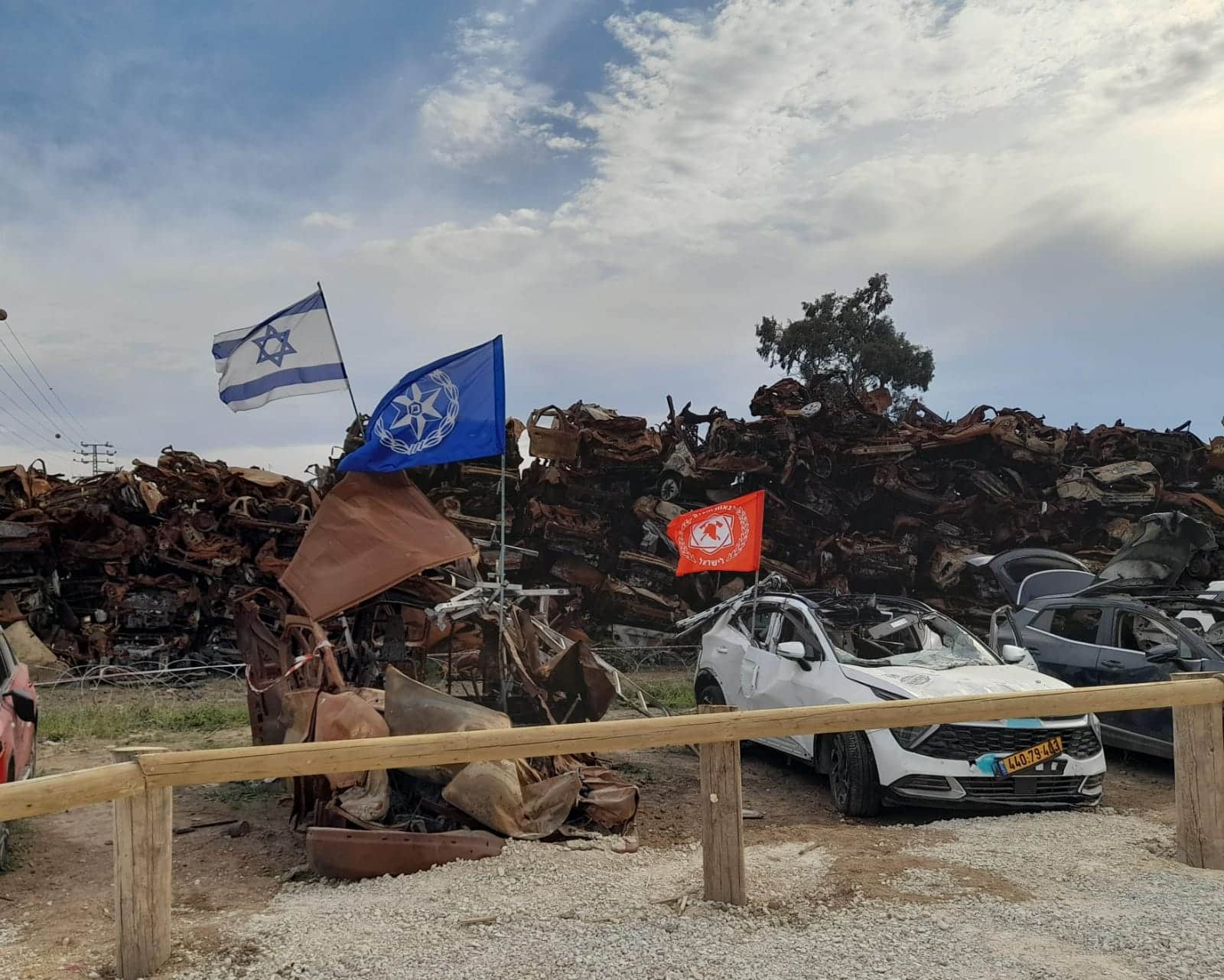
Re’im Recreational Area: The Smiling Faces from the Pictures
From here we shall backtrack a short distance and drive south on Road 232. This is where we see the Nova Festival site between Kibbutz Beeri and Kibbutz Re’im. Drive slowly! Road 232 is rutted after hundreds of tanks drove over it on their way into Gaza. You might hear rumblings from your tires, which sound like you have a flat.
The Nova Festival has been transformed into a national symbol. Young people converging to have a good time, to bond with their inner self and with nature, who all of a sudden find themselves in the midst of an impossible battlefield facing hundreds of heavily-armed terrorists. Along the dirt road leading to the memorial you can look around and see just how flat and open the area is, a fact that made it virtually impossible to find cover. In some of the places there are small gullies with sparce scrub and trees. These are the places the youngsters tried to seek refuge.
The memorial itself instills an aura of sanctity. It is closely reminiscent of memorials to Holocaust victims. It consists of stakes bearing large pictures of the victims. The site attracts many visitors, including those with no direct connection to those victims, but who share the need to get a sense of the place and bond with the deceased. Some of the pictures have various texts and objects attached to them. Wandering among the pictures alludes to the worlds that have been lost.
The encounter with the victims’ pictures at the memorial reminds us also of what we are fighting for: the faces gazing at us from the pictures are smiling, infused with an inner light; some of them are depicted with their partners and families. It is almost impossible to reconcile these pictures from joyful occasions with the appalling events that unfolded here. The pictures do, however, remind us why despite it all, we have got to be strong. They remind us of what we are defending here. Together we shall prevail.
